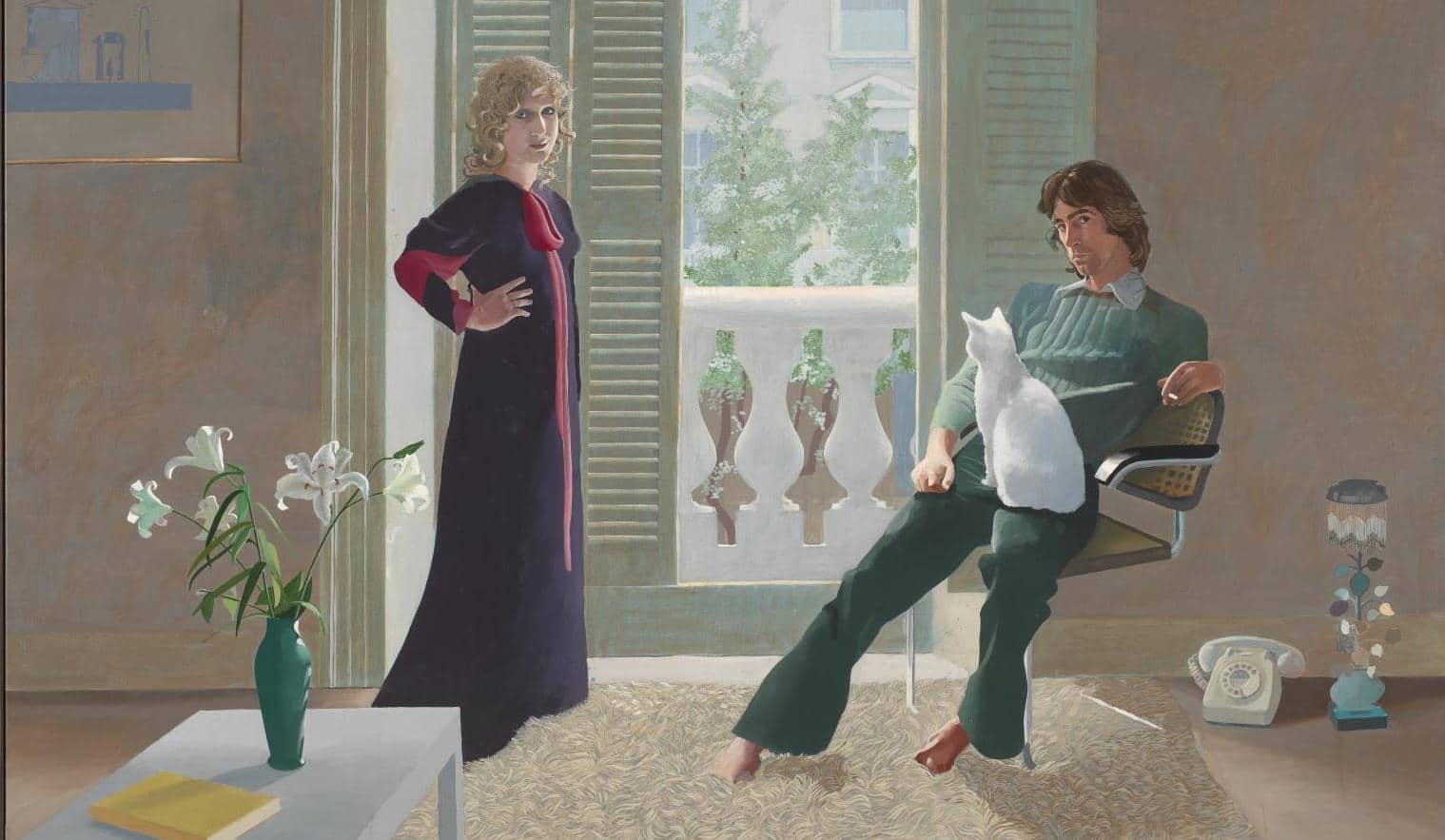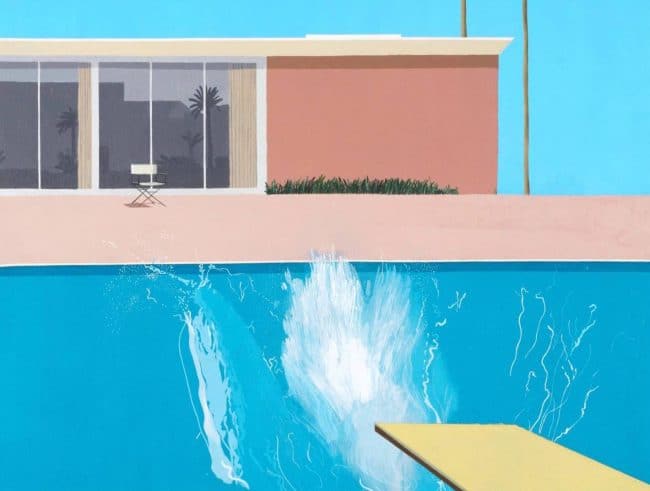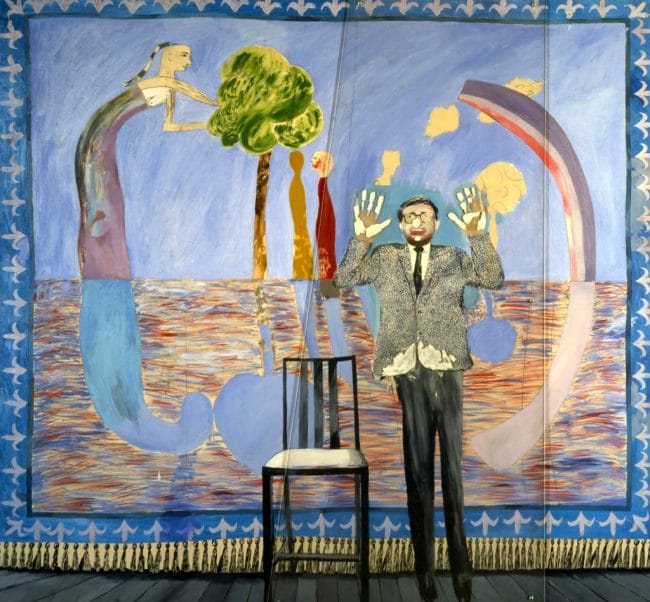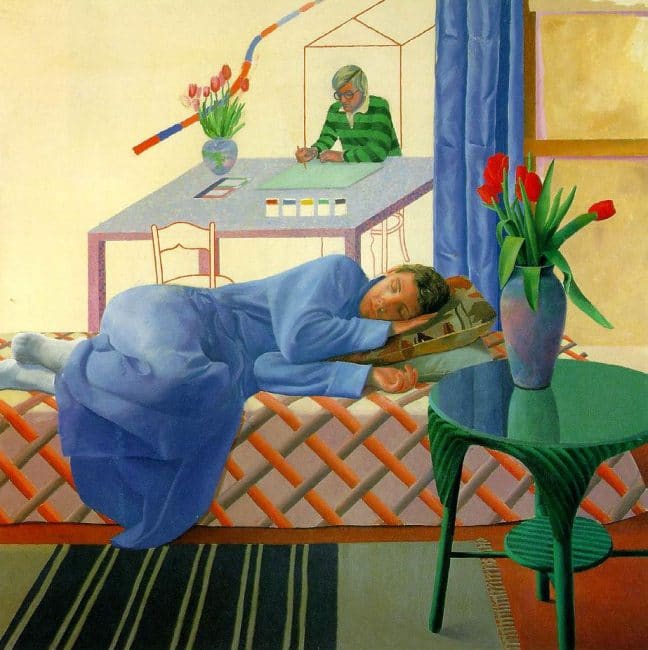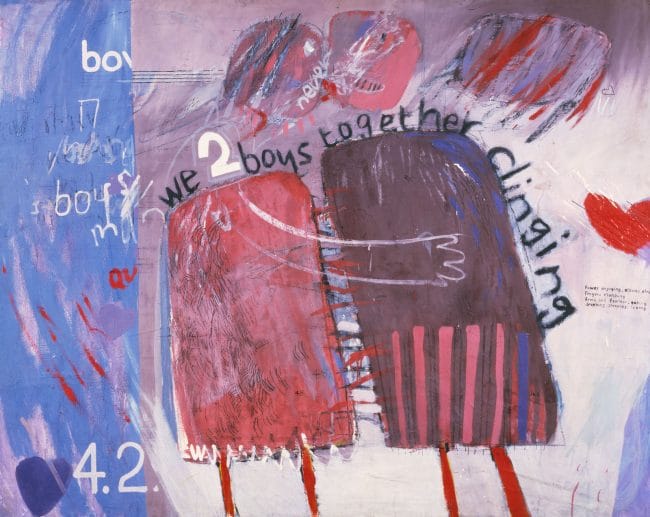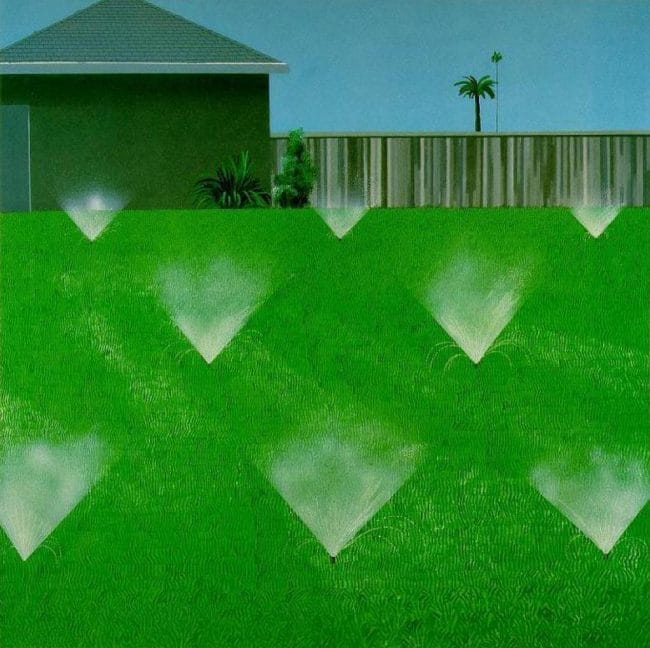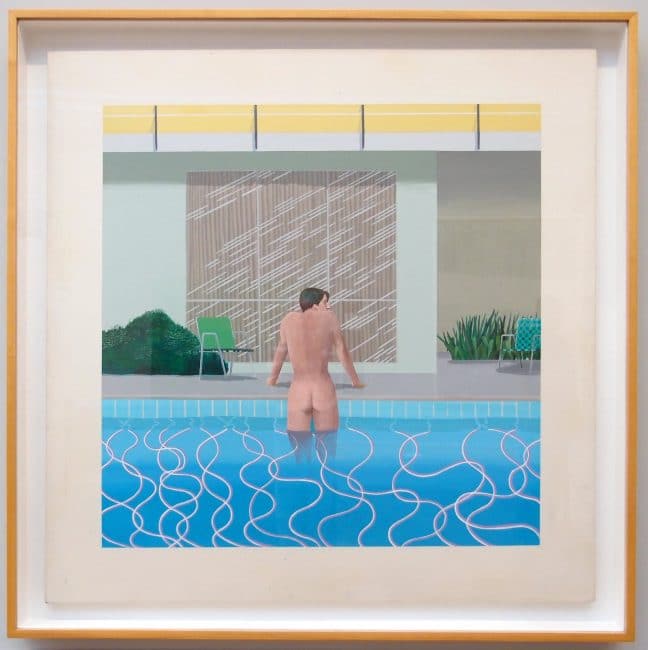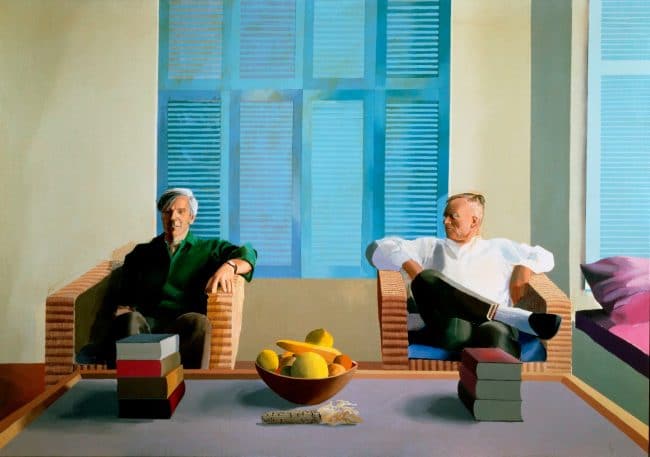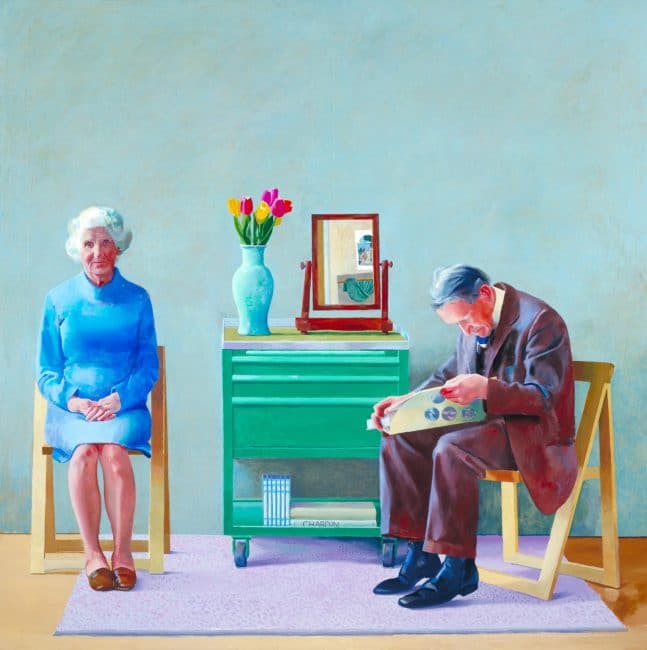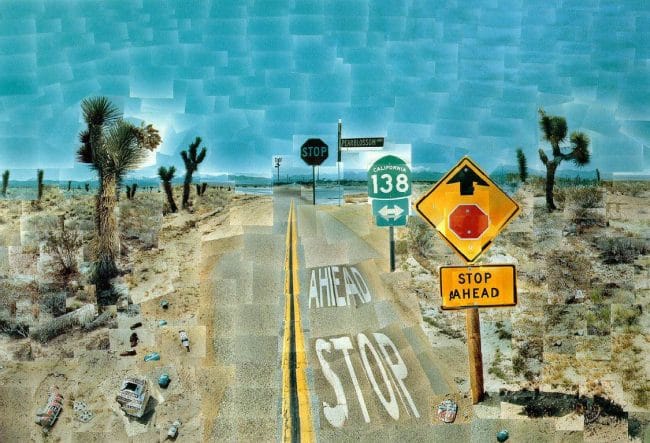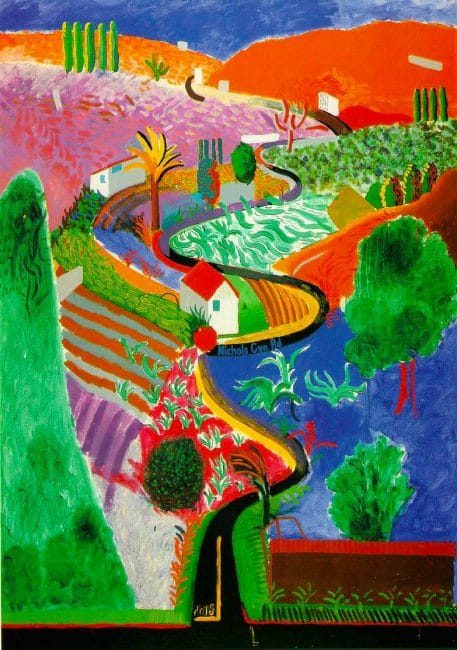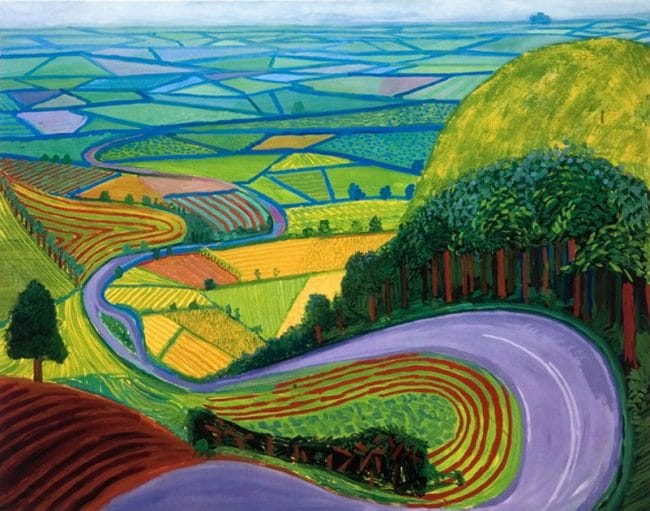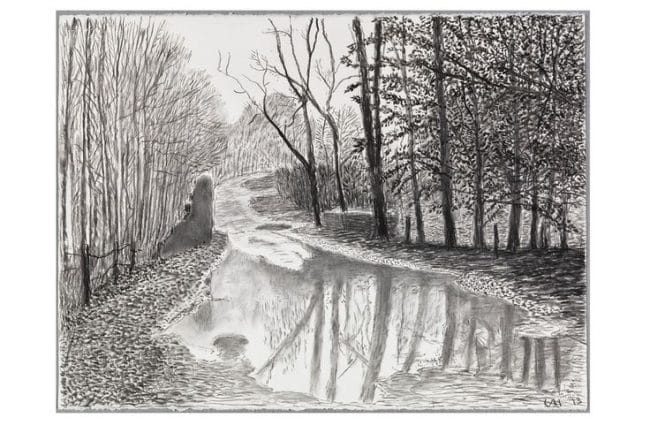Writing about the latest David Hockney exhibition at first seems rather like trying to write about a Stones concert. These cultural icons have established places in the audience’s hearts. Everyone knows exactly what to expect and that’s just fine and dandy although it leaves us struggling to find something new to say. But with Hockney’s 80th birthday approaching and his role as ‘greatest living British artist’ firmly established in the public mind, Hockney at Tate Britain is an unmissable opportunity to take a closer look.
His work includes plenty of visual games, wit and spectacular colour, but it can be easy to miss the serious side. All the while Hockney is raising important questions about the nature of art – he has been challenging and questioning the conventions of picture making over a remarkably productive 60 year career.
The Tate cleverly introduces us with a reminder of some of his strategies, for example in ‘Play Within a Play’ he experiments with pictorial space – a male figure, hands seemingly pressed up against a plexiglass screen stands in a narrow apparent space infront of a painted tapestry.
With ‘Model with an Unfinished Portrait’ we puzzle over the illusion of painting itself – in the background of a portrait of a sleeping model his own part-finished self-portrait works on a blank pad, the rear of another canvas cutting in to the space.
We then take a roughly chronological tour through key parts of his career. He bursts on to the scene with phenomenally inventive student works and we see multiple pictorial games as he experimented with varying styles. Key influences were Picasso and the abstract expressionists, and there are traces of both as he wilfully switches and overlaps styles, throwing in graffiti and sexual themes in works like ‘We Two Boys Together Clinging’.
He continued to change his styles, moving from abstract towards more representational, including portraiture, and all the while embracing new technologies.
Drawn by the sun, excitement and freedom of Los Angeles, he depicted the straight lines of modernist buildings, lawn sprinklers and reflections from sunlit pools, riffing on modernist tropes. ‘A Bigger Splash’ is almost abstract until you add the splash. He enjoyed the fact that it took seven days to paint the one second splash – a dig at the spontaneity of Pollocks drips set upon a modernist grid.
In California, Hockney’s work moved towards greater naturalism. For us the last room of great works is a stunning selection of seventies double portraits. Friends and family are set in enclosed spaces; cool and formal they still capture intimate and complex relationships. Less radical than earlier works they still have an emotional intensity that is lacking in the later works that we move on to in the final part of the exhibition.
Musing upon the limitations of photography, he took to cubist multiple viewpoints set in grids of polaroids or collages of 35mm prints. This added time, space and movement, best achieved in ‘Pearblossom Highway’
The Tate proposes that these assemblages were inspiration for later panoramas where landscape becomes an dazzling abstract of vivid colour, as in ‘Nichols Canyon’.
Moving back to Yorkshire, there are plenty of eye-catching wolds, trees and woods, in acrylic, video and iPad, but catching the eye are 25 deceptively simple charcoal drawings of the ‘Arrival of Spring 2013’.
It is not very long since A Bigger Picture, at the Royal Academy in 2012, and there seems to have been almost no end of smaller exhibitions since, but this Tate show is the most comprehensive yet, and likely to be the most visited in Tate history. Book in advance!
Hockney is on at Tate Britain until 29 May 2017
For more information and booking visit Tate Britain
See also our previous posts: The Arrival of Spring at Annely Juda and On the Trail of Hockney in East Yorkshire.
Recommended reading purchase here




